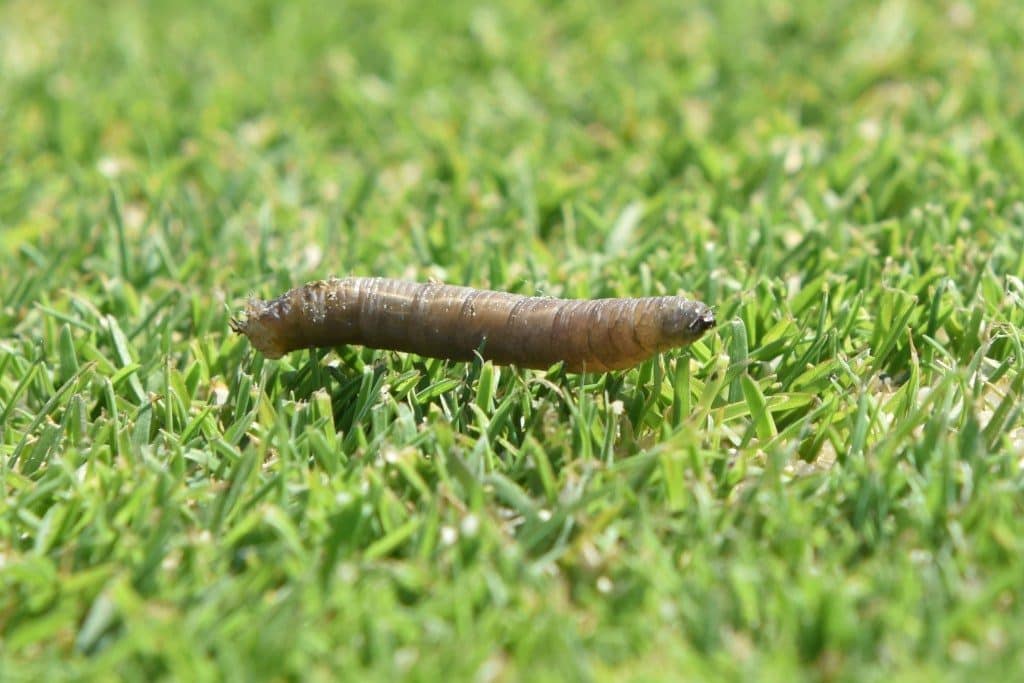

What are leatherjackets?
Many insects have two stages to their life. The first stage is called the larval stage. Caterpillars are in their larval stage, before becoming fully-grown butterflies. Leatherjacket is the name given to the larval stage of the crane fly (sometimes referred to as a daddy long-legs). Before becoming crane flies, they are leatherjackets.
What do they look like?
Leatherjackets are usually around 1 to 1.5 inches long and have a dark outer layer with no legs.
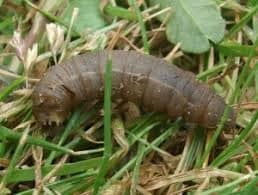

Leatherjacket – Larval stage of the crane fly


Crane fly – The leatherjacket turns into a crane fly
How can leatherjackets help a lawn?
Leatherjackets eat the roots of the grass plants. By doing this, they promote the growth of new, healthier roots. They also form part of the soil’s ecosystem—their cases break down into the soil once they pupate (turn into crane flies), adding nutrients to the soil.
We’ve seen plenty of healthy lawns that contain small populations of leatherjackets. However, just like most other parts that make up a soil’s ecosystem, too many leatherjackets can cause damage to a lawn.
What sort of damage can they cause to my lawn?
The damage is caused by two main factors:
- The leatherjackets – As we discovered earlier, leatherjackets feed on the roots of the grass plants. When the population of leatherjackets is balanced (i.e. not too many of them), they are beneficial to the overall health of the lawn. However, when populations increase, they will start to cause damage to the grass plants by eating too many roots too fast. The grass plants are unable to keep up with the amount of roots being eaten and will eventually die back.
- Birds/predators digging and eating the leatherjackets – Birds and other predators can be very destructive to the lawn because they dig the leatherjackets out of the soil. As the population of leatherjackets increases, so too does the damage. It is not uncommon to see large areas of a lawn ripped up and destroyed by a combination of leatherjackets feeding on the grass roots, and birds or predators digging for them.
How do I know if there are leatherjackets in my lawn?
There are common signs that we look for when diagnosing a leatherjacket infestation.
- Small ‘drill holes’ are apparent on the lawn’s surface. These holes are often made by birds (especially starlings) when they attempt to lift the leatherjackets out of the ground.
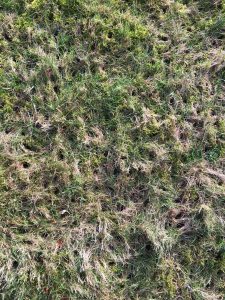

Above: Drill holes will become apparent on a lawn. This is especially obvious on lawns that have a high amount of thatch
- Flocks of starlings on your lawn – Leatherjackets make great bird food! Starlings are the most likely to descend on your lawn, although other birds, such as crows, blackbirds and woodpeckers are also common predators.
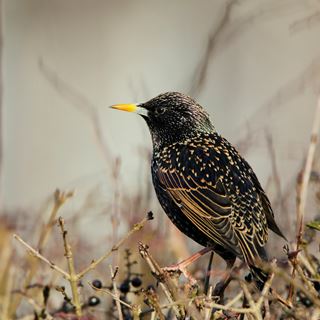

Above: Starlings will dig at the lawn to feed on leatherjackets
- Larger predators such as badgers have been known to dig for leatherjackets. They create large holes in the lawn—you may be able to spot some clues, such as badger droppings nearby, to help identify the culprit.
When leatherjacket infestations become densely populated in an area of the lawn, you will see start to see patches of unhealthy looking grass beginning to appear. These patches may start off yellow and eventually die back completely to create large areas of bare soil.
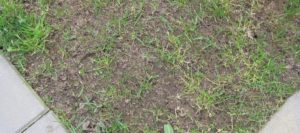

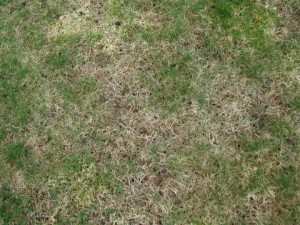

Above: Areas of lawn will start to die back and become bare
If leatherjacket numbers are high, the overall condition of the lawn will be affected. This is because the grass plants have to use their energy to grow more roots instead of using it to grow green and healthy grass plants. Fungal diseases will also find it easier to attack the weakened grass plants.
How do they get there?
During mid to late summer, crane flies lay their eggs in your lawn. Their eggs fall onto the soil and are burrowed below the surface by rain. Over time, the eggs will hatch and become larvae.
How do I get rid of them?
Again, like many lawn pests, it is more a case of control when it comes to leatherjackets. It would be impossible to completely get rid of them, and it isn’t something you would want to do anyway as they form part of the natural ecosystem of a healthy soil.
If the leatherjackets themselves aren’t causing any damage to the lawn, but predators (such as birds) are, then you can use bird deterrents. They come in all shapes and sizes and are available from most garden centres. An effective homemade deterrent can be made by tying old CDs to sticks and placing them throughout the garden.
If the population of leatherjackets is high, then you will need to take a different course of action. The professional insecticide that was once used by lawn care companies and greensmen is currently unavailable, so your Green Man Lawn Care technician is unable to apply anything. However, there is a natural alternative to insecticides, called nematodes, that you can try.
Nematodes are microworms that burrow into the leatherjacket and feed on them. They are widely available online.
As nematodes are living organisms, you should ensure that you store them correctly, apply them at the correct time of year and in the correct conditions. Nematodes need to be applied when the soil is warm. The soil should be kept damp during application and should remain damp for several weeks after.
We recommend that you follow the instructions included in the pack for best results.
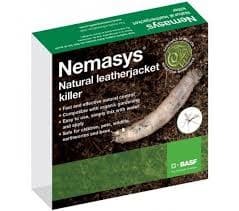

Why doesn’t Green Man Lawn Care apply nematodes as part of their service?
There are many factors that can affect the overall outcome of using nematodes on a lawn, so it is important that they are applied at the correct time of year and in the correct conditions. This could mean regular watering following application. The correct time of year can change depending on the weather conditions and repeat cycles are more than likely required to get the best results. The products should be used soon after purchase or kept in a fridge as they have a limited shelf life. Bearing in mind all of these factors, we would not be able to provide a cost-effective and reliable enough service.
Will the damage repair itself?
In most cases, yes. It isn’t common to see irrecoverable damage to a lawn from leatherjackets, but that’s not to say it never happens. We have seen many cases where the affected areas have needed to be repaired. If the affected areas remain bare, a patch repair would be the only option.
